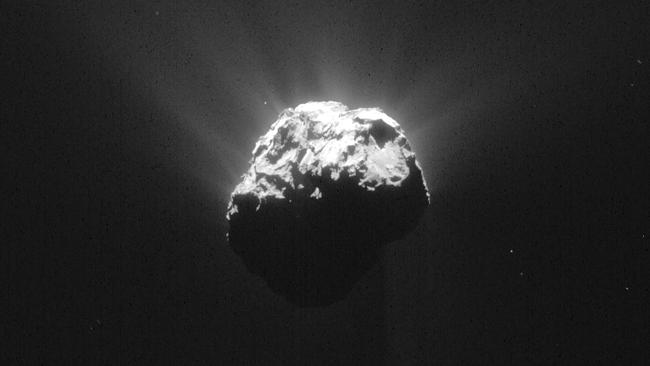Asteroid half a kilometre in diameter will pass Earth on Australia Day 2015
DID you catch a glimpse of the of the giant asteroid passing Earth this morning? If not, there is still an opportunity.

Space
Don't miss out on the headlines from Space. Followed categories will be added to My News.
UPDATE: While the early hours of this morning provided our best opportunity to get rare look at the giant asteroid flying past Earth - all is not lost.
NASA scientists have said those in the southern hemisphere will still have a chance to view the phenomenon if weather permits.
To view the asteroid you will need clear conditions with not too much light pollution.
If all else fails, you can view the rare moment online via a virtual telescope that will be tracking the asteroid’s approach.
EARLIER: ASTRONOMERS will be pointing their telescopes to the sky this Australia Day trying to get a glimpse of a giant asteroid heading our way.
But there will be no need to enlist the help of Bruce Willis, as the big space rock will safely pass Earth.
The asteroid, dubbed 2004 BL86, is estimated to be around half a kilometre in diameter and will fly past the planet at about three times the distance of Earth to the moon.
Retired manager of NASA’s Near Earth Object Program Office Don Yeomans said the fly-by of 2004 BL86 will be the closest of any known space rock this large until asteroid 1999 AN10 flies past Earth in 2027.
“While it poses no threat to Earth for the foreseeable future, it’s a relatively close approach by a relatively large asteroid, so it provides us a unique opportunity to observe and learn more,” he said.
The asteroid won’t be visible to the naked eye, but NASA says small telescopes and strong binoculars should be enough to bring it into view.
Peak brightness is expected at magnitude 8.8 and will occur around 4am Greenwich Mean Time, at which point it will be visible over Europe, Africa and most of the Americas.
Being in a less favourable position for reflecting sunlight, Australians and east Asians will be have to view the asteroid in the early hours of the morning AEDT.
Due to being a several hours earlier than its closest approach, the asteroid will be around a magnitude fainter at this time.
To secure a look at the asteroid, astronomers are being told to gaze in front of the Leo, Cancer and Hydra constellations.


